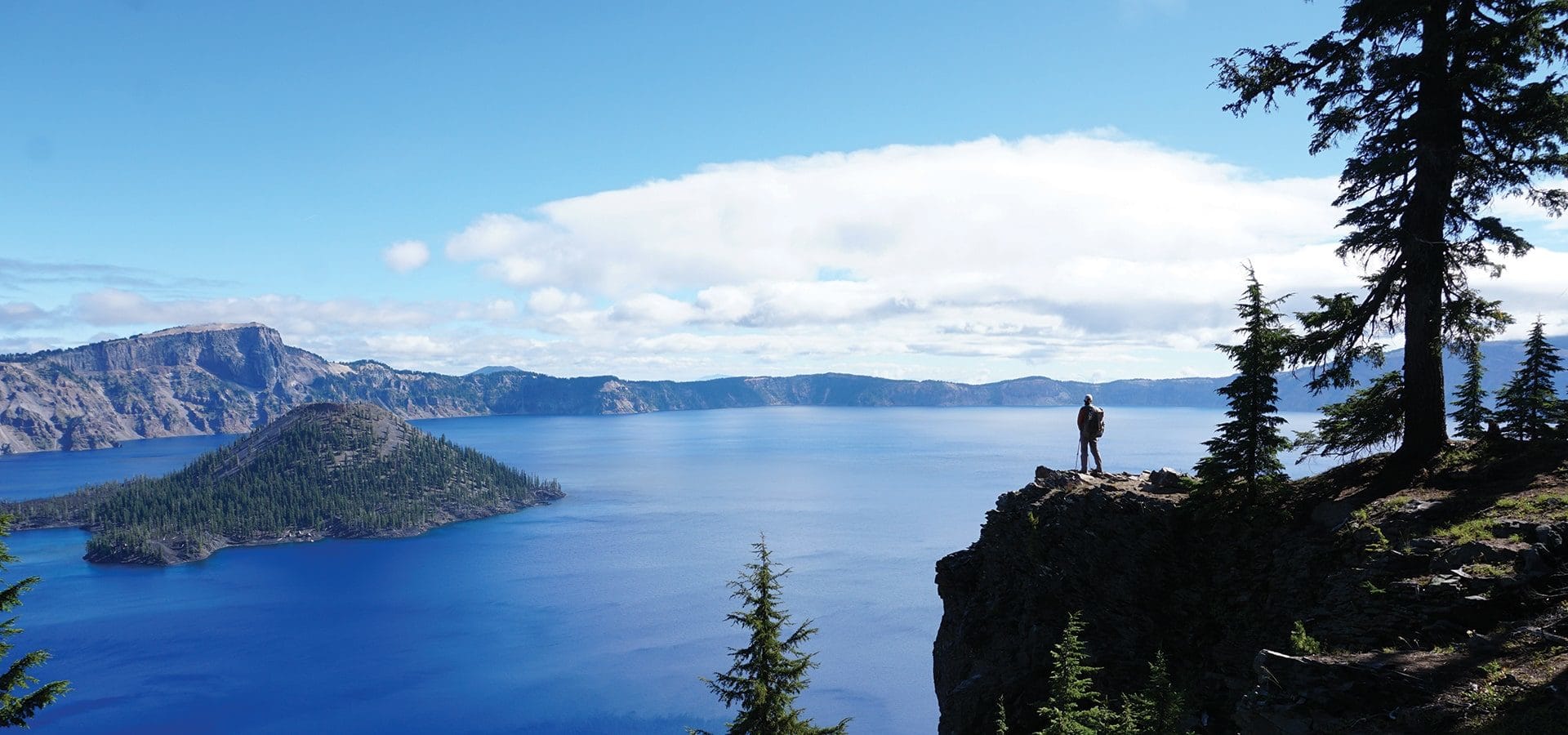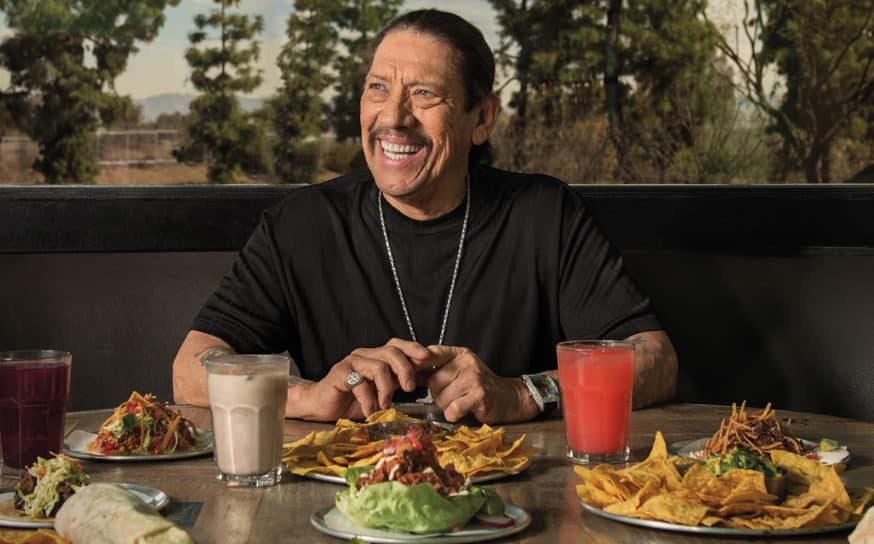A SoCal Couple Recounts Hiking the Pacific Crest Trail Early in the Pandemic
The 2020 hiatus.
-
CategoryExperiences, Hidden Gems, Outdoor Adventure, Sights + Stays
-
Written byAmber Klinck
-
Photographed byAmy and Brian Micheletti
When Amy and Brian Micheletti made the decision to hike the Pacific Crest Trail (PCT) roughly eight years ago, they had no way of knowing they’d be embarking on a 2,653-mile journey during a global health crisis. To Amy and Brian, 2020 was the year both their son and daughter would be in college—making the roughly six-month commitment to the trail more feasible. They couldn’t have anticipated that their kids would be attending classes virtually from home.
When Amy and Brian Micheletti made the decision to hike the Pacific Crest Trail (PCT) roughly eight years ago, they had no way of knowing they’d be embarking on a 2,653-mile journey during a global health crisis. To Amy and Brian, 2020 was the year both their son and daughter would be in college—making the roughly six-month commitment to the trail more feasible. They couldn’t have anticipated that their kids would be attending classes virtually from home.
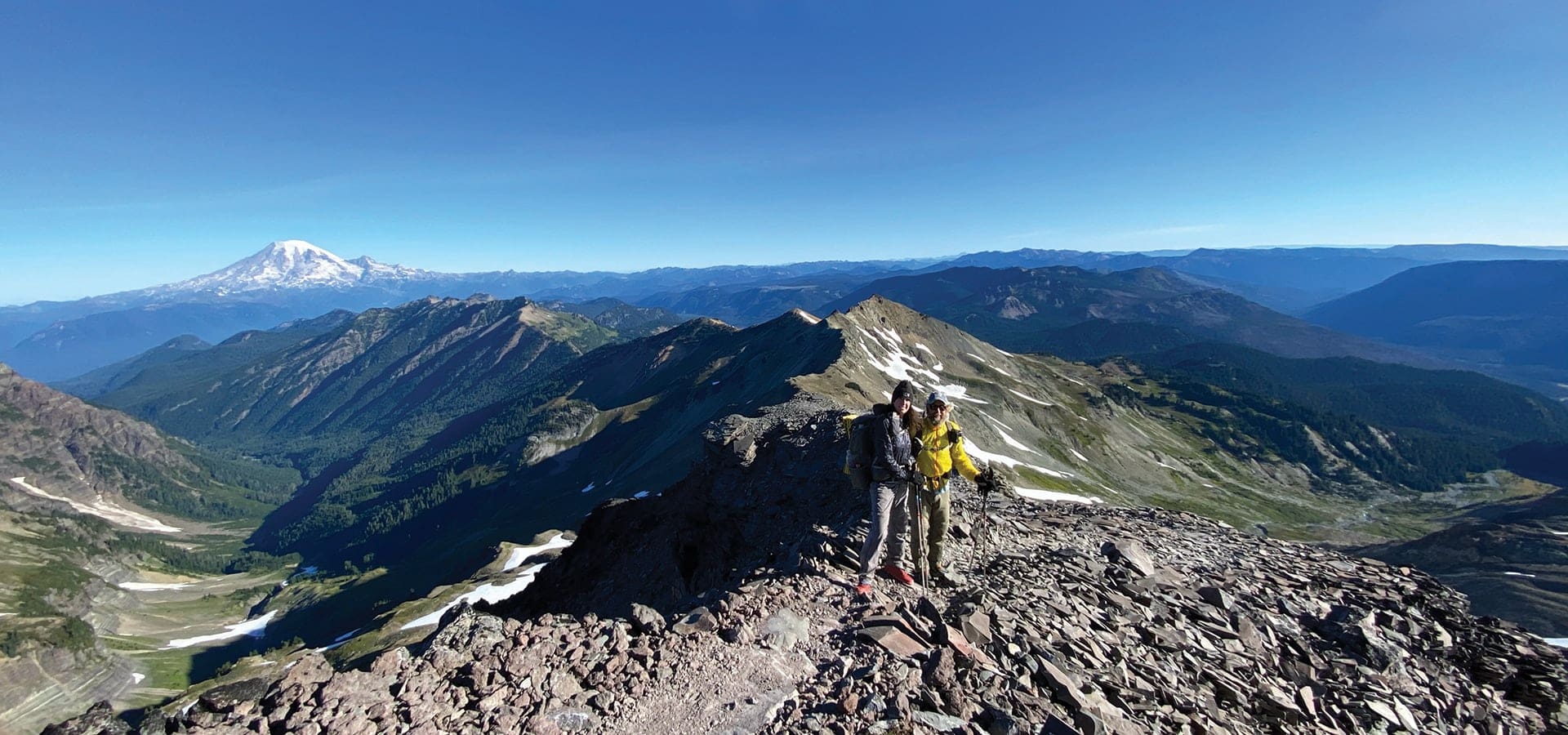
In October 2019 they received their permit from the Pacific Crest Trail Association. Their hike was set to start on March 22, just days after Los Angeles began its March 19 Safer at Home emergency order.
With so much uncertainty in the air, Amy and Brian could have easily opted out of the adventure they spent years planning and preparing for—but they didn’t. They continued on their journey and overcame both physical and mental hurdles that, at times, had them doubting why they were on the trail. They focused on the things that were most important to them and relished the simplicity of being disconnected from the distractions of daily life.
They weathered the cold, the heat and the physical challenges that come with hiking 20 to 25 miles a day. And they were rewarded with awe-inspiring natural beauty, the kindness of strangers and a sense of accomplishment that only comes with setting out to do something incredibly hard … and actually doing it.
During the six months Amy and Brian were gone, the world was changing fast. “We definitely knew the basics of what was going on from our kids,” Amy notes. On the trail, however, days would pass with no cell service. “There were times we’d be in the middle of the wilderness and someone would come up to us and say, ‘How long have you been out here? Do you know there’s a pandemic?’”
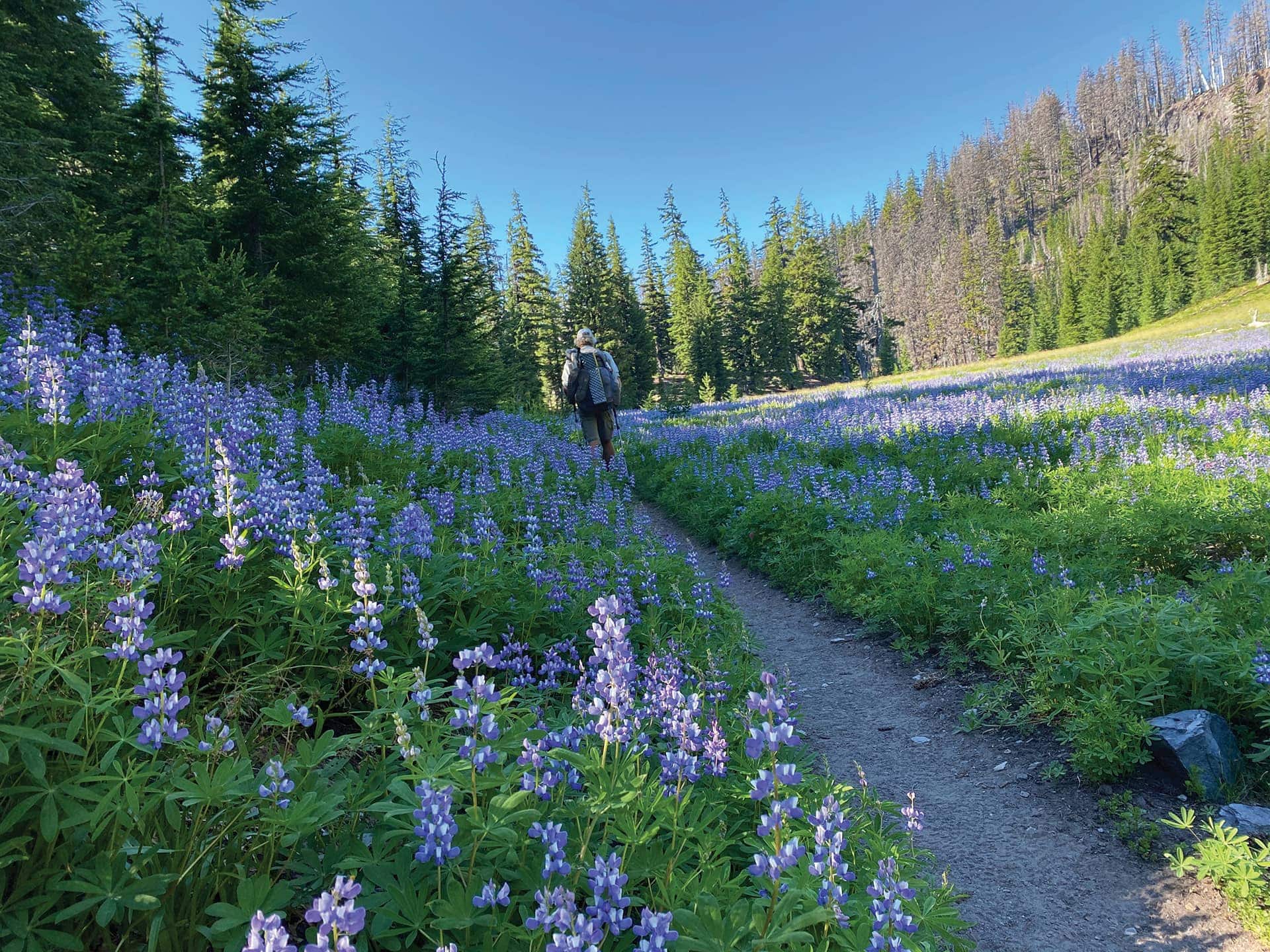
Any news they may have missed on the trail, they were able to catch up on during their stops along the way. “We had 32 stops,” Amy notes. The duo would hike for roughly 100 to 150 miles, pop into a town, resupply and make their way back to the trail. At every stop was a supply box shipped to each of the 32 preplanned locations, packed with food Amy and Brian dehydrated themselves.
“That preorganization took longer than anything,” Amy points out. “We needed to know how many days and how many miles we were going to go.”
Amy and Brian soon realized, however, that they underestimated how many miles they’d travel in a day. “When we started, we thought we’d average 17 miles,” Amy notes. But 17 quickly turned into 20 to 25, and eventually the pair had to alter the shipping locations of their supply boxes.
Not all PCT hikers plan ahead as meticulously as Amy and Brian. The problem with not prepping your supplies ahead of time during a year like 2020, however, is the store you may be relying on to restock could be understocked themselves or possibly even closed.
There were, of course, more perks that came with heading into towns along the trail than just resupply boxes. Sleeping in an actual bed was a welcome change, along with well-earned indulgences like cookies, milkshakes and cheeseburgers.
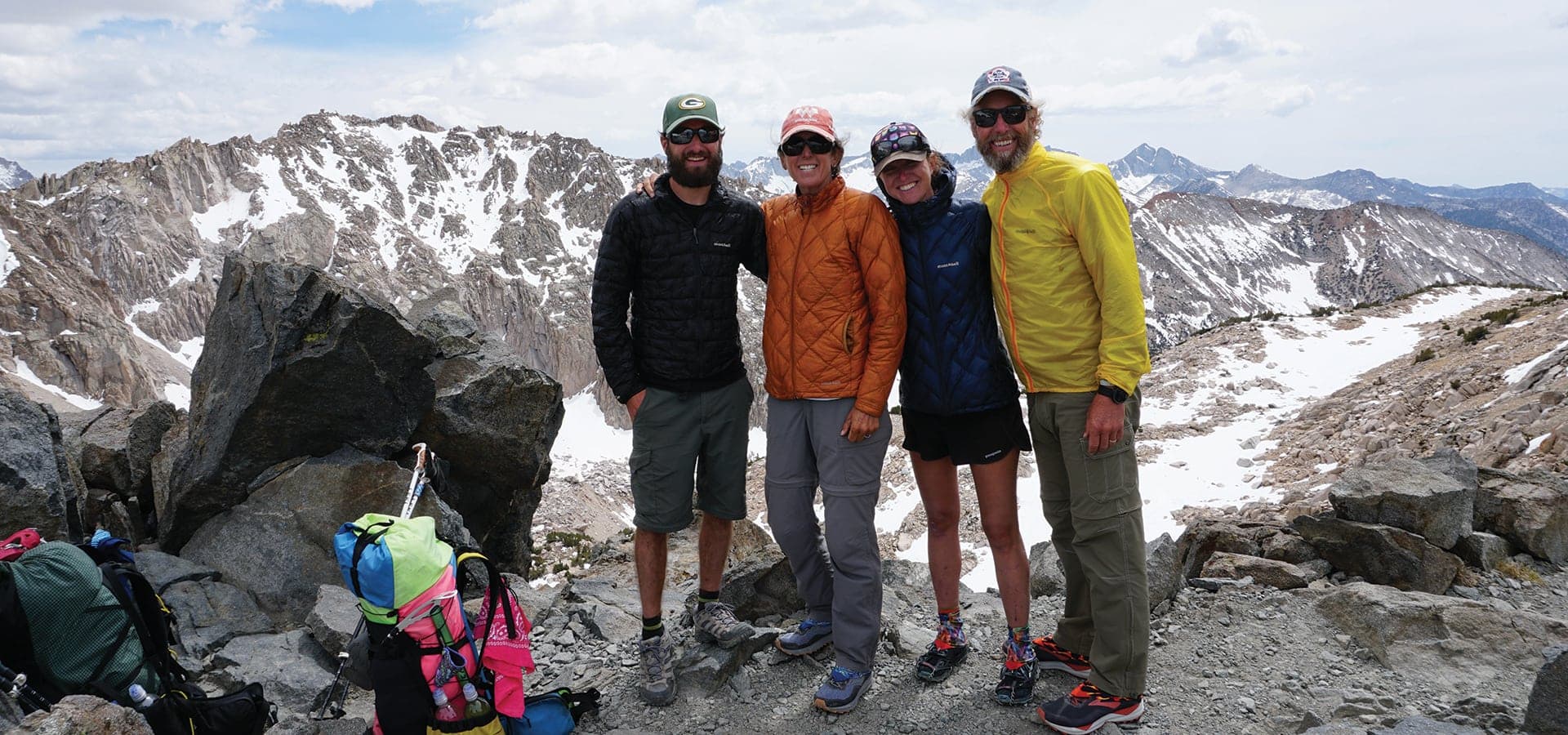
Creature comforts aside, Amy and Brian noticed each town had its own approach to COVID-19. “Every time we were in a town, we wore a mask,” Brian notes. “And we never met a hiker who didn’t follow the rules. People were really respectful. There were a couple of towns we’d walk into, though—you’d walk up, and the sign would say ‘masks required’ and ‘takeout only,’ and then you open the door and the bar would be packed and not one person had a mask on.”
What was consistent from town to town was the appreciation for PCT hikers and their business. “A lot of businesses really rely on the hikers for their income,” Amy notes. Though the number of permits given each year by the Pacific Crest Trail Association is highly regulated to minimize the number of people on the trail, during a typical year thousands of permits are granted. “This year we think only 400 people [hiked the PCT],” Brian says.
Not only does having fewer hikers affect the economy of the towns they pass through, it also affects the social element of the PCT hiking community. “A lot of people do the trail for the social aspect of it,” Brian explains. “They get to meet people and find themselves. There are trail families—you find people who have similar interests, and you hike together. If you don’t hike together during the day, you camp together at night. It becomes this moving family. That was a lot different this year.”
“Being on the trail, I started to focus on what was really important to me: family, friends and enjoying life.”
Having fewer hikers may have made an impact on the social aspect of the journey, but it also offered those who were on the trail in 2020 a rare opportunity to hike the Pacific Crest without the traffic of thousands. “We did see a lot of wildlife just cruising along. We saw nine bears, all black bears. One of them had a cub with her,” Amy says.
“There were a lot more deer out and about,” Brian adds.
“In the Sierra—the John Muir Trail—that’s where there are usually so many people, just crazy amounts of people,” Amy points out. “We even summitted Mount Whitney with not one other person on top. And they normally give 160 permits a day. We were the only ones up there, with a 360º view. It was phenomenal.”
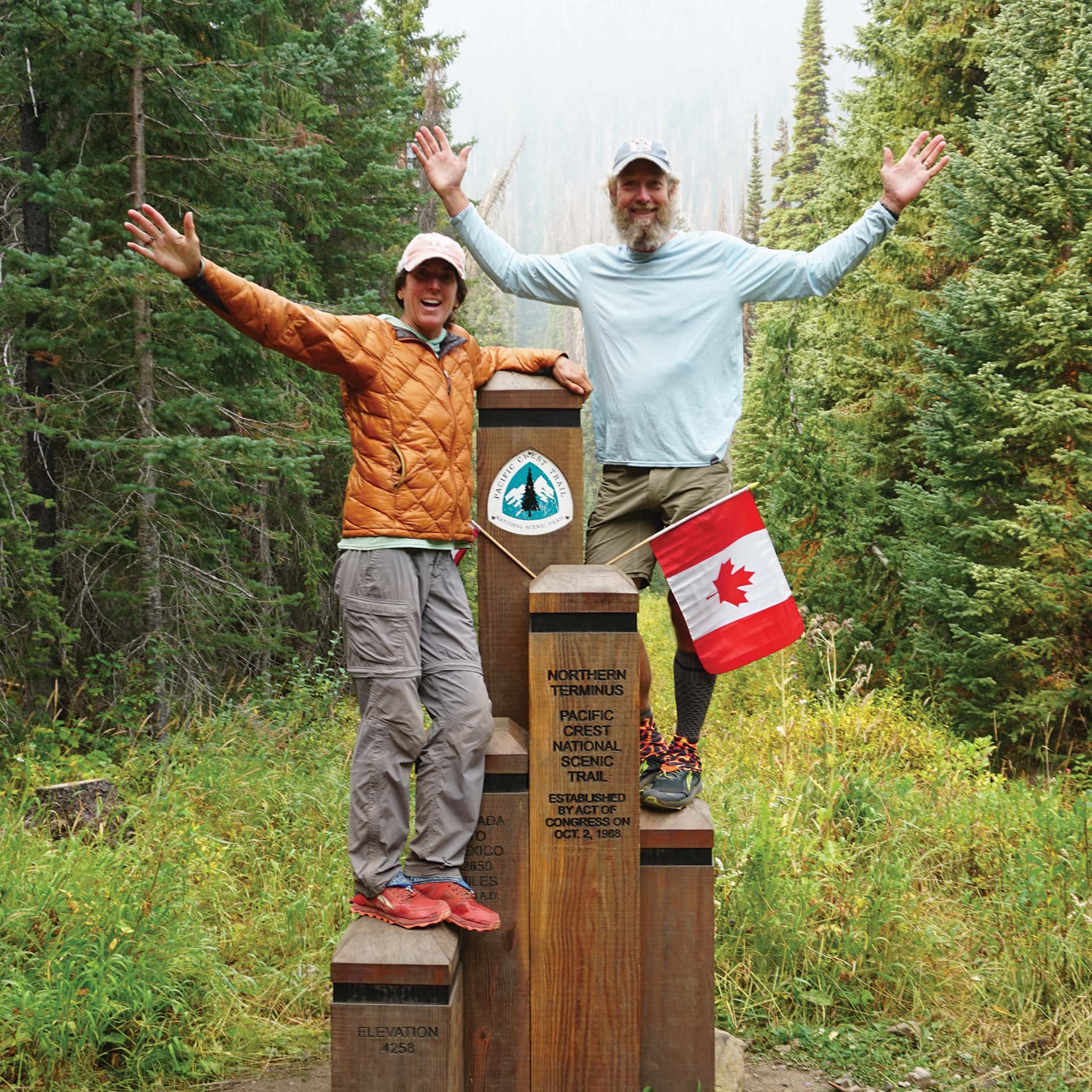
Not every moment of their experience was on par with a solo summit to the top of Mount Whitney. There were days they really missed their kids, days they were hot and sweaty, hiking through parts of the trail that weren’t particularly remarkable. There were 17 back-to-back nights that Amy slept in two down jackets. “That’s how I got my trail name, Double Down,” Amy fondly notes.
Toward the end of their journey, Brian struggled with shin splints and blisters on his feet, and both were taking Aleve nightly. “I was worn out,” Brian says.
“We were definitely depleted,” Amy adds. “We are 50 and 51. Most of the people on the trail are younger—that’s just the norm. By that last month, our bodies were for sure breaking down.”
So why do it? Both Amy and Brian are avid hikers. They started backpacking roughly 14 years ago—mostly weeklong trips. There’s no doubt they have a deep appreciation for nature. It’s evident in the way Brian describes the beauty of Crater Lake, or how Amy stopped dead in her tracks when she spotted a tiny flower on the trail. “It looked like something from a Dr. Seuss book,” she says.
Still, their desire to travel on foot for six months stems from more than just wanting to sightsee. “You disconnect. You’re not grabbing your phone, checking emails and checking texts,” Brian says. “Being on the trail, I started to focus on what was really important to me: family, friends and enjoying life.”
Being away from home gave Brian the perspective to delve into what he wanted from his life. A physical therapist, he had been thinking of opening his own practice for a while.
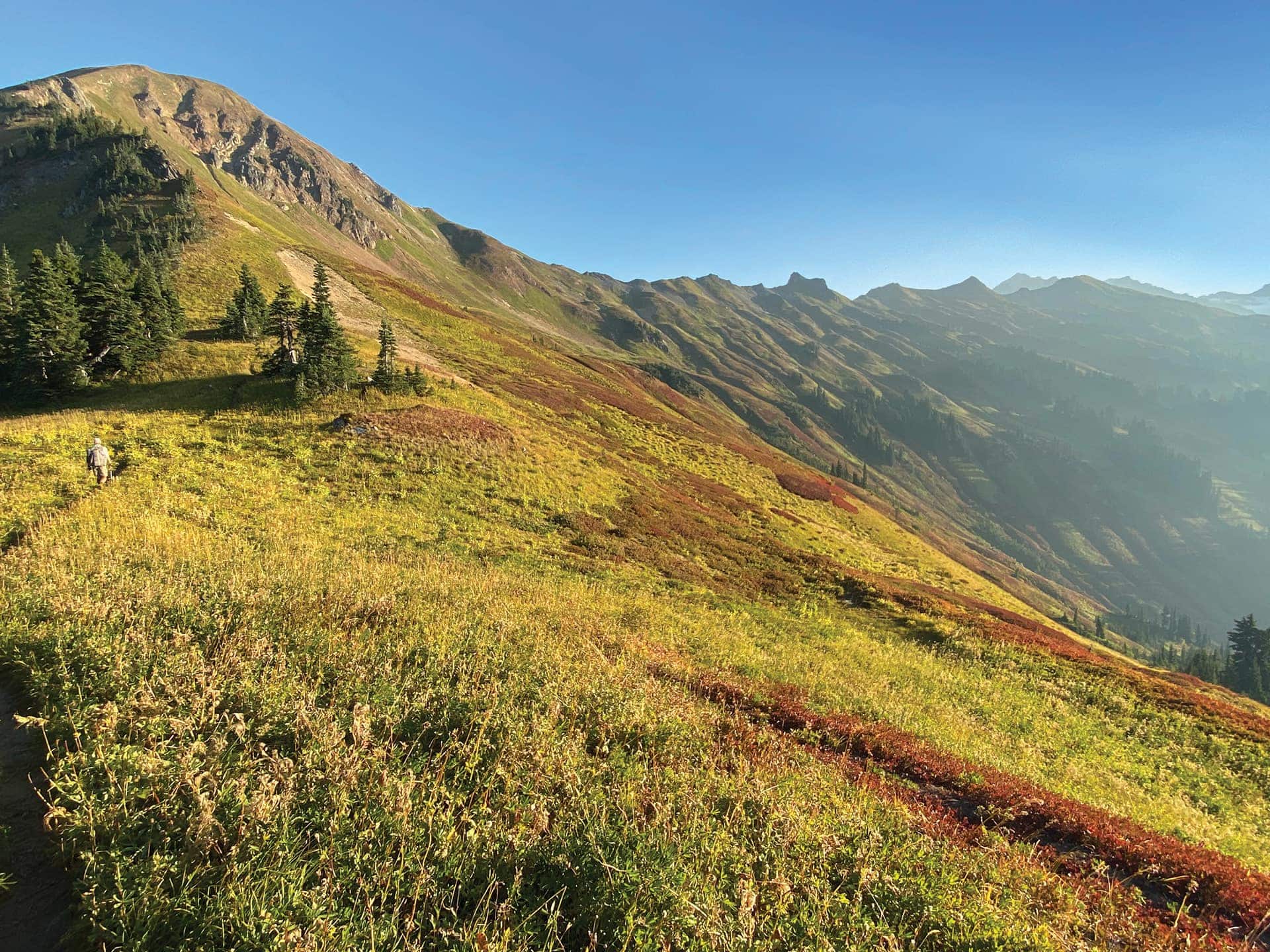
“It was a lot easier being away from it all, so I could focus on my feelings and what I want in life,” he says. “How far are we going to go? That’s a common question among hikers. If this was easy, everyone would be out here. I’m trying to take some of that same mindset into opening my own business.”
Ironically, isolating from society at large also gave Amy and Brian a new appreciation for people in general. Each small act of kindness from a stranger made a big impact—whether it was a local offering a ride into town, the widespread support they received on the blog where they documented their experiences, or the “trail magic” they found along the way.
Trail magic could be something as simple as a cooler filled with cold drinks and food for the hikers along the trail. “Random people would park by the trail and set it up. It’s free; they don’t want anything in return,” Brian explains. “There are some really neat people in this world—especially this year when there were so many horrible things going on.”
Amy and Brian got home on September 20, 2020. On a normal year they would have flown home from Canada, but due to the U.S. travel restrictions they had to backtrack 35 miles—eventually flying home from Seattle. In addition to recovering from the aches and pains that took nearly a month to go away, Amy and Brian had to adjust to their new normal—a home life that was very different from the one they had in March 2020.
“It’s a different normal,” Brian says. “We’ve been gone for six months, and we can’t go see friends and family. That part is really hard.”
With all that has happened in 2020—from the pandemic to civil unrest and political divisiveness—it’s remarkable to think of hitting the pause button and finding solace in nature. While the physical toll the trip took on their bodies had Amy and Brian thinking they were done after the PCT, a few months at home and a solid recovery have them itching for their next big adventure.
Monday Moods: “Ready for the Fall”
Cue up the warm fires and stiff drinks—it’s spooky season.
Fame, Fortune & Fajitas
Danny Trejo’s life story has more unexpected twists than a movie plot, but it begins and ends in the San Fernando Valley.
Get the Latest Stories




